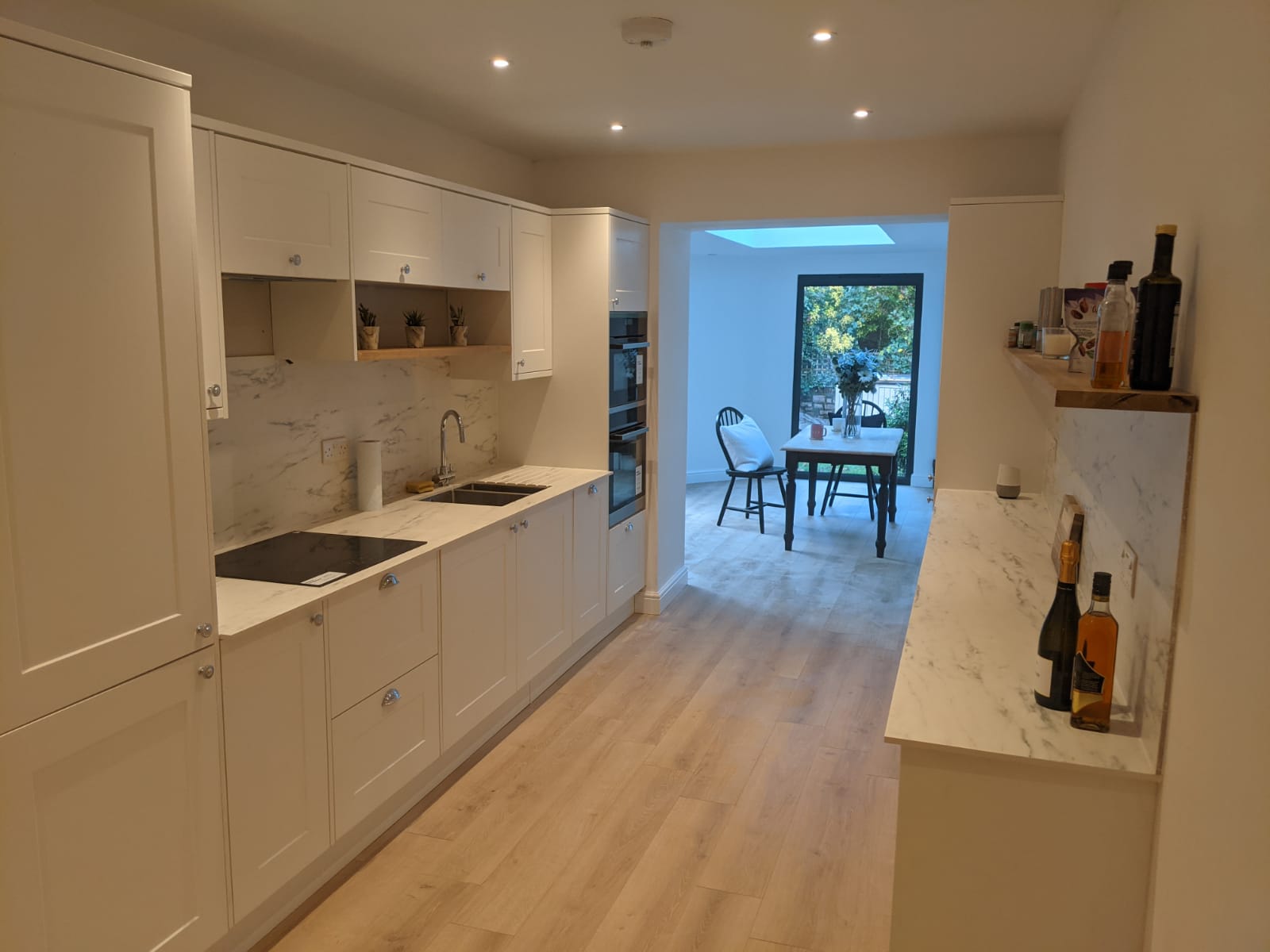advice centre & faqs
Permitted Development
There are many guidelines on which extension/conversion projects fall within your permitted development rights.
Extensions cannot take up more than 50% of the land around the property. They cannot be made to the front of the house, and they cannot extend more than 4 metres to the back of the property. Loft conversions are considered part of your permitted development rights, but not if you plan on adding a balcony or dormer. And in some conversion areas your permitted development rights are removed altogether.
And these are just some of the rules associated with permitted development!
That’s why having an architect by your side is the perfect way to navigate these rules. Not only will they design your space to fit in with the requirements, they’ll help you obtain certification that proves your build is legal. Project doesn’t fall within permitted development? No problem. Your architect can apply for planning permission instead. This offers more freedom in what you can create, while your architect can help maximise your chances of approval.
Larger Home Extension
This method of planning, introduced in 2012, allows homeowners to build large rear extensions without the need for planning permission.
Created specifically for those wishing to extend the rear of their property, this scheme was originally set to expire in May 2019. Due to its popularity, it has now been made permanent.
Under this scheme, you can extend your home by up to 8 metres (if detached) or 6 metres (other home types). This is double what could be achieved under your Permitted Development Rights, and will not require planning permission. However, you will need approval from any affected neighbours before building can commence, as well as approval from the local authority, who will issue a Lawful Development Certificate at the end of the process.
Now for Scale to come in. Like traditional residential planning practices, we have an incredible team of designers ready to prepare your drawings. Not only this, our in-house planning team are able to submit your application on your behalf, liaising with the local authority throughout. This ensures you have both great designs, and the best chance of first-time approval.
Building Regulations
You’ve got your plans approved, so what happens next? More paperwork - hurray!
However much you may want to zoom past the ‘boring bits’, and get straight to building and kitting out your new space, we cannot stress enough how important it is to be vigilant at nailing down your building regulations approval. Building regulations approval is the step a homeowner takes between acquiring planning permission and appointing a builder for your project. Luckily for you, we’re here to lend a helping hand on getting you up to scratch on how and where to do so.
Why do they matter?
Getting building regulation approval is a statutory requirement set by the government in order to ensure that buildings are designed and constructed in accordance with the Building Regulations & Associated Legislation. Approval is predominantly necessary to ensure the health and safety of those living in the property, as the regulations oversee not just the structural integrity of the building, but matters such as fire safety, energy efficiency, and sustainability. Therefore, they are not only important for day to day building matters, but have long term environmental benefits.
Larger home extension scheme
Take advantage of this new form of planning.
- Can extend up to 6-8 metres
- Need consent from neighbours to construct
- Design must follow strict guidelines
- No need for planning permission
- Only applies to single-storey rear extensions
- Takes longer than other planning to obtain
Permitted development rights
Another scheme that allows smaller extensions to bypass planning permissions.
- Can extend up to 3-4 metres
- Guaranteed approval if guidelines are met
- Though requirements come with restrictions
- Covers conversions and extensions
- Does not apply to flats or maisonettes
- Does not apply to home within conservation space
Planning approval
The traditional way to get approval from your local authority.
- More freedom with design
- Can be used for all home types and projects
- Lasts up to three years
- Securing this alone can improve the value of your home
- No guarantee approval will be given
- Some local authorities are more generous than others
Structural Calculations
What is an structural engineer?
Ever wonder why more building don’t just fall down? That’s because structural engineers exist. These professionals specialise in the structure of buildings, determining a project’s strength, durability, and safety - thanks to some very clever calculations.
They’ll tell you what steel beams need to be in place, where to put them, whether or not your structural glass has the strength for your home, and advise on the foundations of your project.
Because structure is so important to so many areas of your home, a structural engineer will often work alongside your designer and contractor, to make sure your home is as safe as it can possibly be.
When do I need a structural engineer?
You’ll likely need a structural engineer if you’re…
- Building an extension
- Converting a loft
- Removing a chimney breast
- Removing / modifying internal walls, especially load bearing walls
- Fitting solar panels
- Underpinning floors
- Modifying / adding doors and windows
Basically, anything that involves building regulations, you’ll want a structural engineer involved.
What will a structural engineer provide?
The first thing a structural engineer is going to need is an initial brief on your project. For this, you’ll need provide as much background information as you can, including measured surveys already undertaken. They’ll then arrange a home visit, whereby they’ll make sure the measurements they have are up to scratch.
Once this has been taken care of, they’ll then liaise with your architect, if you have one, to put together a set of in detail plans to be submitted to your local building control. If you’re not using an architect for your building regulations drawings, your structural engineer could do this in their place, if this is a service they offer.
The Process
Measured Survey
We will visit your property to get all the measurements we require and confirm with you exactly what you are hoping to achieve.
Proposed Design
Our talented designers will produce architectural drawings to your specification within 7 days of the measured survey. At this stage you will be able to review and make any final changes ready for submission.
Planning Permission
Once you’re happy with the final design, we will advise you of the best planning route. We will submit & manage the entire application process for you.
Building Regulations
Ready to build? We will provide you with detailed technical drawings and specifications. We can also submit the application for you using our recommended approved inspectors & also point you in the direction of trusted builders.






